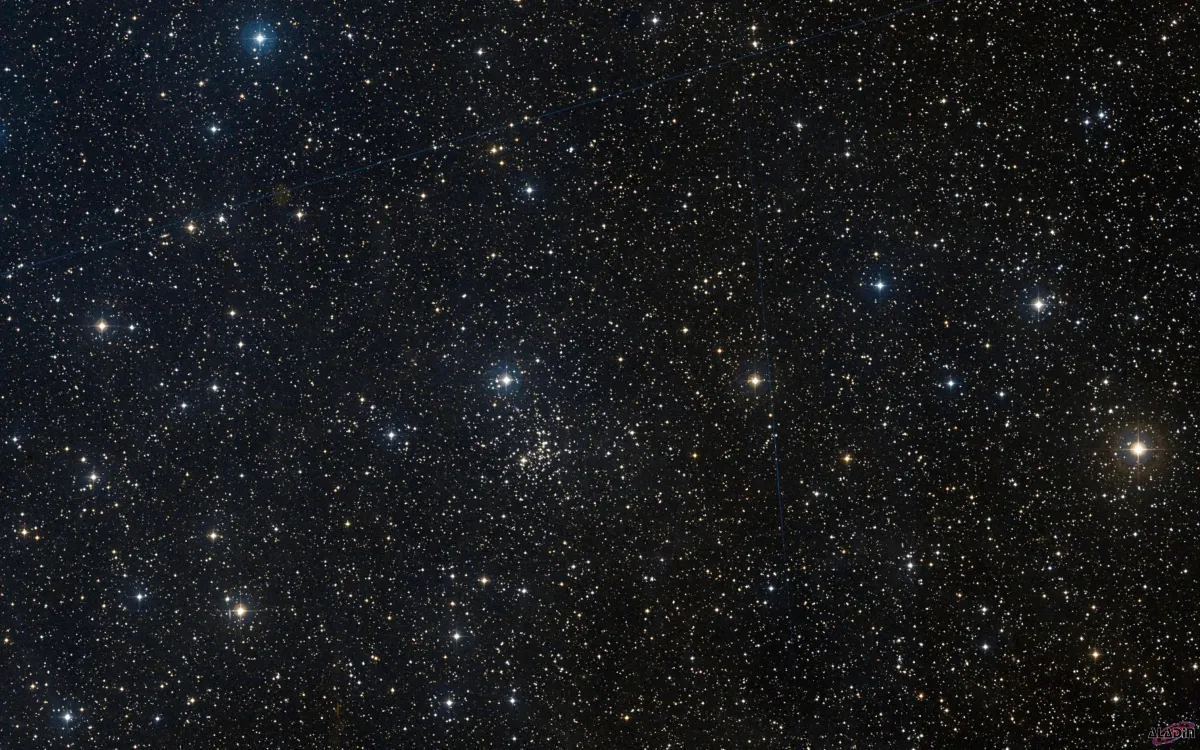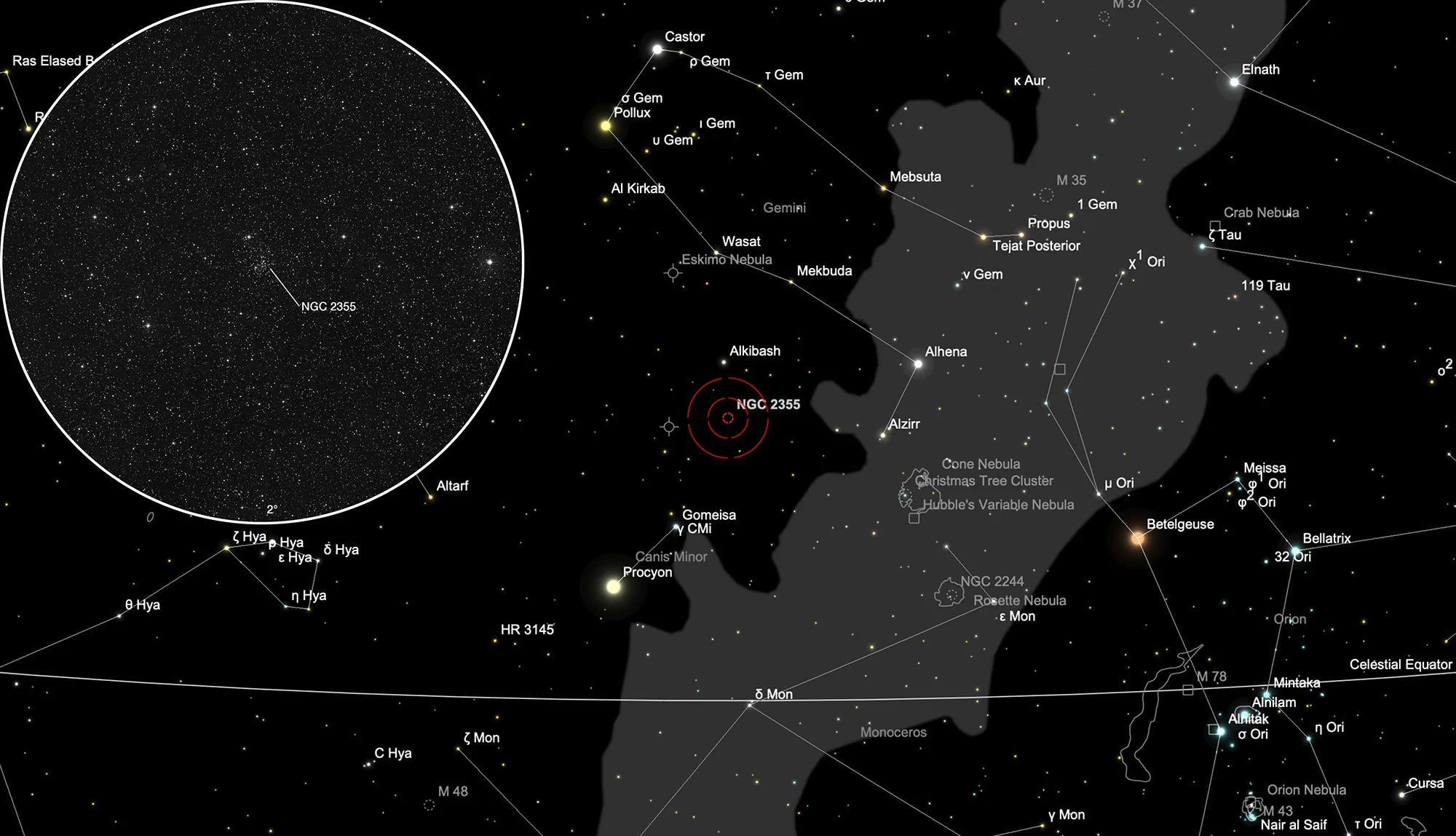Open Cluster NGC 2355

History
This open cluster was discovered by William Herschel on 8 March 1784 using his 20 foot telescope with 18.7 inch aperture. He listed it as VI 6 and noted: «A cluster of stars of various sizes pretty much compressed in the middle, pretty rich.» A week later on 16 March 1784 he observed it again, assumed it was new and listed it as VII 6 with the notes: «A pretty rich and compressed cluster of stars.» [463] The second entry was listed by Dreyer as NGC 2356.
John Herschel, continuing his fathers work, listed the cluster as h 439, observed it on 23 January 1832. He wasn't sure whether it was the same cluster and noted: «A pretty rich cluster of very small stars; irregular; round; 5' diameter; not bright in the middle; stars 11...16 magnitudes.» [466]
Physical Properties
| Designation | NGC 2355 |
| Type | OCL (II2p) |
| Right Ascension (J2000.0) | 07h 16m 59.2s |
| Declination (J2000.0) | +13° 45' 00" |
| Diameter | 8 arcmin |
| Visual magnitude | 9.7 mag |
| Metric Distance | 1.650 kpc |
| Dreyer Description | Cl, pS, pRi, mC, st 15…16 |
| Identification, Remarks | WH VI 6; h 439; GC 1508; NGC 2356; OCL 496 |
Finder Chart
The open cluster NGC 2355 is located in the constellation Gemini. On 9 January it in opposition with the Sun and is therefore highest in the sky at local midnight.
